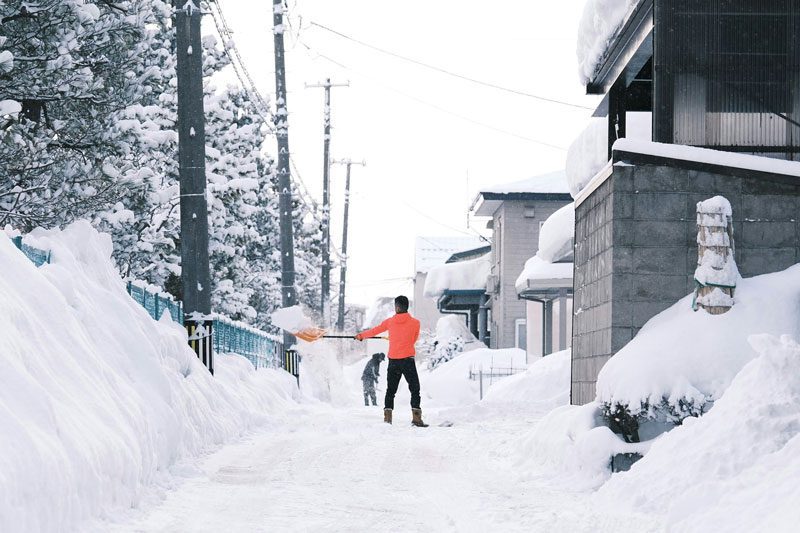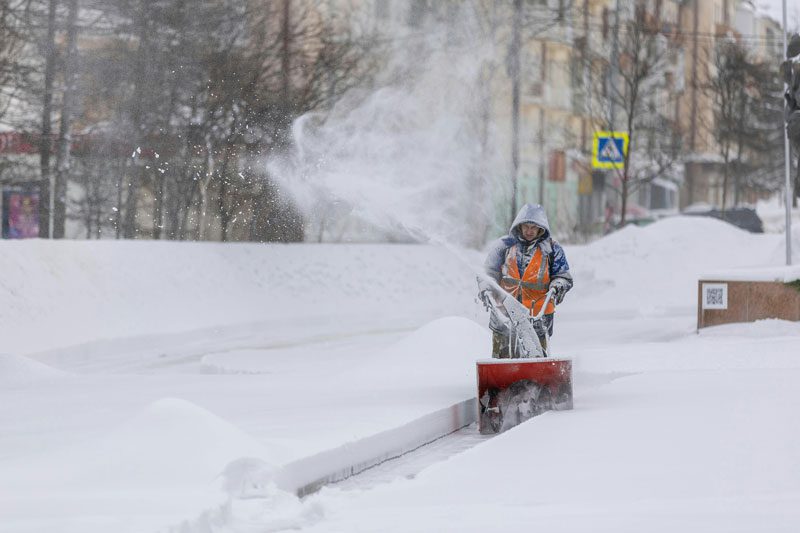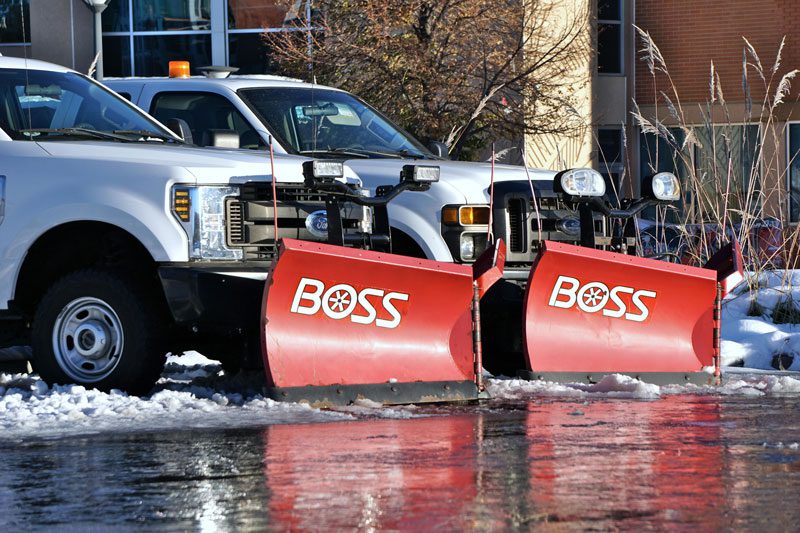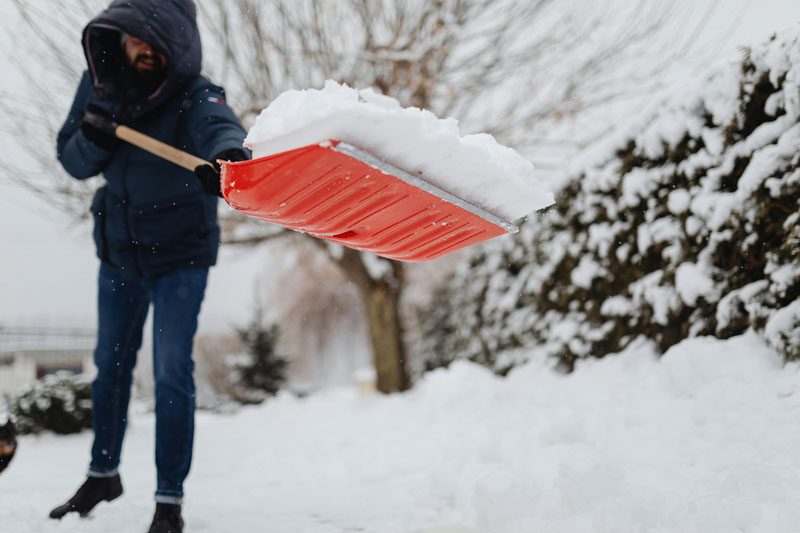If you find the cold air ushering in an entrepreneurial bug, it may be worth considering what this time of year can offer you. As winter approaches, there’s an opportunity to capitalize on the season’s unique demands. One such opportunity might be starting a snow removal business.
Starting a snow removal service can be a small or large endeavor, depending on demand, what equipment you have, and how much time you’d like to devote to the idea. Regardless, with the right preparation, you can take advantage of the snowy season while providing a helpful, necessary service to your community.
Kicking off a snow removal business requires a few key steps, from creating a business plan to setting yourself up with the necessary insurance and equipment. If you’re ready to get the (snow)ball rolling, here’s how you can dive into this seasonal enterprise.
Why Start a Snow Removal Business?
Simply put, people are willing to pay when it comes to snow removal, whether it’s shoveling a driveway, salting a sidewalk, or plowing a parking lot. The U.S. snowplow industry is forecast to reach a market size of $27.9 billion in 2024. And, business is particularly booming in the Northeast, where winters can bring heavy snowfall. There, 16% of people told YouGov that they pay someone else to remove snow from their driveways.
There are other benefits to starting a snow removal company. It has a low barrier to entry, requiring relatively less training and starting capital than other types of businesses. It’s also a business idea that has potential for expansion. Not only can you scale up within the snow removal business (ie; start by shoveling sidewalks and work toward plowing parking lots), but you can also tie this business into other seasonal ventures, like landscaping, during the warmer months.

How to Start a Snow Removal Business in 10 Steps
- Make a Business Plan
- Choose a Business Structure
- Register and License Your Business
- Get the Proper Insurance
- Take Care of the Financials
- Get the Necessary Equipment
- Build Your Online Presence
- Draft a Client Contract
- Set Up Easy Invoicing and Online Payments
- Prepare for Seasonal Variables
1. Make a Business Plan
The first step in starting any new business is to make a business plan. A business plan will outline your goals, strategies, competition, and how you intend to find and allocate funds. Some of the key components of a business plan include an executive summary, where you give an overview of your objectives and value proposition; a company description; a market analysis, where you delve into your competition and how you intend to hold your own; your marketing and sales strategies; and your financial projections.
Even if you plan on starting small—maybe with a few neighbors’ houses—having a business plan can only help. It’ll be there for you as you scale, evaluate, and fine-tune your snow removal business.
2. Choose a Business Structure
To make things official, you’ll need to choose a business structure for your snow removal business. The two options you’re most likely to choose between are a sole proprietorship and an LLC. While many entrepreneurs choose a sole proprietorship, especially when they’re just starting out, you should be aware that this structure offers little in the way of legal protections. An LLC, on the other hand, would offer protection over your personal assets, protecting them from the business’s debts and obligations.
Ultimately, the choice is up to you, and consulting with an accountant or lawyer is never a bad idea. They can help you determine the best structure for your risk tolerance, business plans, and tax strategy.
3. Register and License Your Business
Depending on where you live and what kinds of snow removal services you plan to offer, you may need to register your business and obtain the necessary permits and licenses. This might include a business license, snow removal permit, and/or contractor’s license. Check with your local municipalities to find out the specifics of what’s required.

4. Get the Proper Insurance
When you start a snow removal business, you will need to look into insurance. At minimum, general liability insurance is essential for covering bodily injury, property damage, and any potential legal fees. If you drive a truck to plow, you’ll also want to get commercial auto insurance to cover any vehicle-related incidents while on the job. If you have employees, workers’ compensation insurance is required in virtually all states.
5. Take Care of the Financials
When starting a business, it’s important to keep your business finances separate from your personal finances. You’ll need an EIN, or employer identification number, from the IRS. You can apply for free in just a few minutes on the IRS website. An EIN can be useful for establishing business credit, boosting your credibility, and opening a business bank account—although not all banks require an EIN to open a business bank account.
6. Get the Necessary Equipment
The next thing you’ll need to do is decide what equipment is essential to running your snow removal business. Be selective in what you choose, and make sure it aligns with the specific services you want to offer, whether it’s snow plowing, snow removal, or some combination of both. The snow removal equipment you might want to consider includes:
- Snow shovels
- Roof rake
- Snowblower
- Ice melts or rock salt
- Salt spreader
- Safety gear (gloves, boots, goggles, reflective clothing)
- Truck with a snowplow attachment
- Trailer for storing and transporting equipment
- Stakes or driveway markers
- Fuel containers (to refuel equipment)

7. Build Your Online Presence
A professional website is an absolute must when it comes to establishing an online presence—and credibility—for your snow removal business. Your website should include all the details of what services you offer along with a prominent contact page so customers know how to reach you. It should also be optimized so search engines can find you when people search for snow removal services in your city. Google Ads can help you bring in some paid traffic while you wait for your SEO efforts to pay off.
In addition, you should also leverage a Google Business Profile and social media to your advantage—both of which are free. For example, if you create a Facebook page for your snow removal business, you can post scheduling updates, highlight upcoming promotions, share tips for home maintenance during the winter, and, most importantly, encourage customers to leave reviews (you can set up a review system on your website as well). Positive reviews are a form of social proof, where readers who see evidence of happy customers are more likely to become customers themselves.
8. Draft a Client Contract
In order to clearly define the scope of your work and your responsibility to each client, it’s important to draft up a contract. This document should include a service description, property description, payment terms, and timeline guarantees.
It’s important to be clear. In specific terms, define what constitutes a “snow event” to set expectations and prevent any misunderstandings. If your client expects their driveway cleared before a certain hour of the day or each time the snow accumulates beyond a certain number of inches, that needs to be ironed out ahead of time. You’ll find plenty of customizable templates online for all types of service contracts, but it may be best to consult with a legal or financial advisor before you finalize anything.
9. Set Up Easy Invoicing and Online Payments
To make day-to-day operations easier, set up an online payment system and automatic invoicing. While you can certainly still take payments in cash or by check, offering your customers a way to pay online can lead to faster payments and accommodate a wider range of preferences. Many modern website-building platforms have integrated apps for this built right in, either for free or at an additional cost. Square, Stripe, and PayPal are some of the big ones that integrate with most business websites. This way, you can expand your payment options to include credit cards, debit cards, or digital wallets.
You should also automate your invoicing system, especially if you’re managing multiple clients. Software like FreshBooks, QuickBooks, or Wave lets you create professional invoices, set up automatic reminders, and track payments for a streamlined workflow.
10. Prepare for Seasonal Variables
This is a seasonal business, so you’ll need to be prepared for the increased demand in the winter months, particularly from December through February. This means you’re ready to jump in and start working when the snow starts falling.
On the flip side, you’ll also need to be prepared for business to fall off in the spring. This is where diversification can really help you maintain a steady income. For example, you could offer landscaping and lawn care services throughout the warmer months, and leaf pickup and gutter cleaning in the fall.

Pros of Starting a Snow Removal Business
- Simplified business model: Starting a snow removal business has a relatively straightforward business model and operations. It also has low financial risk when compared to many other types of businesses.
- Repeat business contracts: If your customers are happy with your services, they’ll be happy to renew their contract with you for the next season—or refer you to other new customers.
- Minimal training needed: Starting a snow removal business requires little formal training and prior know-how. You can teach yourself the necessities and learn as you go.
- Easy scalability: This is a great business to start small and scale as you grow your client list and bottom line. You can start by shoveling and snowblowing, work your way up to residential plowing, and then shoot for commercial plowing contracts. This could even be a great way to start a business as a teenager. You can also scale your business to landscaping and leaf removal services to stay busy through the spring, summer, and fall.
- High demand in snowy areas: If you live in an area prone to harsh winters, especially across the Northeastern U.S., snow removal services can be in high demand.
Cons of Starting a Snow Removal Business
- Highly seasonal business: There is only a need for this service a few months out of the year. You may need to think about diversifying your business and expanding into other income streams.
- Weather-dependent revenue: If it’s a mild winter without much snowfall, you may not have much business that season. This is why some snow plow companies charge an upfront yearly rate to cover them for the whole season.
- Inconvenient work hours: Many people need their driveways and sidewalks cleared before they leave for work in the mornings. Businesses will need their parking lots plowed before business hours. This means that you may be up at odd hours, often before the sun, to clear snow.
- Wear and tear on vehicles: Operating a truck with a snowplow will put plenty of wear on the vehicle, potentially costing you money in repairs.
- Intense physical labor: Shoveling, roof raking, and pushing a snowblower can all be extremely physically taxing. If you aren’t already used to this kind of physical labor, you run the risk of overexerting or hurting yourself.

How to Start a Snow Removal Business: FAQs
How much does it cost to start a snow removal business?
The cost of starting a snow removal business will depend on the size and scope of your operation. If you’re planning on just clearing snow from sidewalks and driveways around your community, you might only need a shovel. A snowblower, meanwhile, can cost anywhere from a few hundred to a few thousand dollars.
If you’re planning on offering snow plow services, whether for commercial or residential clients, costs will be higher. On the low end, base-model pickup trucks can cost upwards of $30,000. The snow plow itself can cost between $1,300 and $4,000, depending on the size, brand, and features.
In addition, you may also need to spend some money on marketing initiatives to build your brand.
How can I find customers for my snow removal business?
Word of mouth is one of the most powerful marketing strategies for small businesses, especially those that operate within a specific area. Encourage referrals from happy customers, showcase your services on social media, and stay engaged with your community. Distributing traditional marketing materials, like business cards, flyers, and door hangers, can also be an effective way to spread the word locally.
It’s also important to have a business website optimized for local search. This is crucial for customers to find you online. You should also create a Google Business Profile, which is free, so your business shows up in Google Search and Maps.
Finally, consider adding a form to your website for newsletter signup and sending out regular email updates on scheduling and promotions.
What equipment do I need to start a snow removal business?
To start a snow removal business, you might need shovels, snow blowers, rock salt, salt spreaders, ice melts, roof rakes, and a snow plow. Having an assortment of equipment will allow you to tackle different types of snow removal tasks as they arise.
How can I set prices for my snow removal business?
To set prices for your snow removal business, consider your target client base—whether residential or corporate. This will influence your pricing structure. You can consider charging a per-item rate (ie; $100 per driveway), a flat rate for the season (ie; $400 for December-March), or even an hourly rate (ie; $30 per hour for shoveling or roof raking).
Keep in mind that your pricing should be flexible and responsive to local demand and competition. It’s important to regularly check in and adjust your rates as necessary.
Are snow removal businesses profitable?
Snow removal businesses can definitely be profitable, especially in areas that experience heavy snowfall. However, your individual profitability will depend on your ability to market your services, build a client base, and set appropriate rates.

